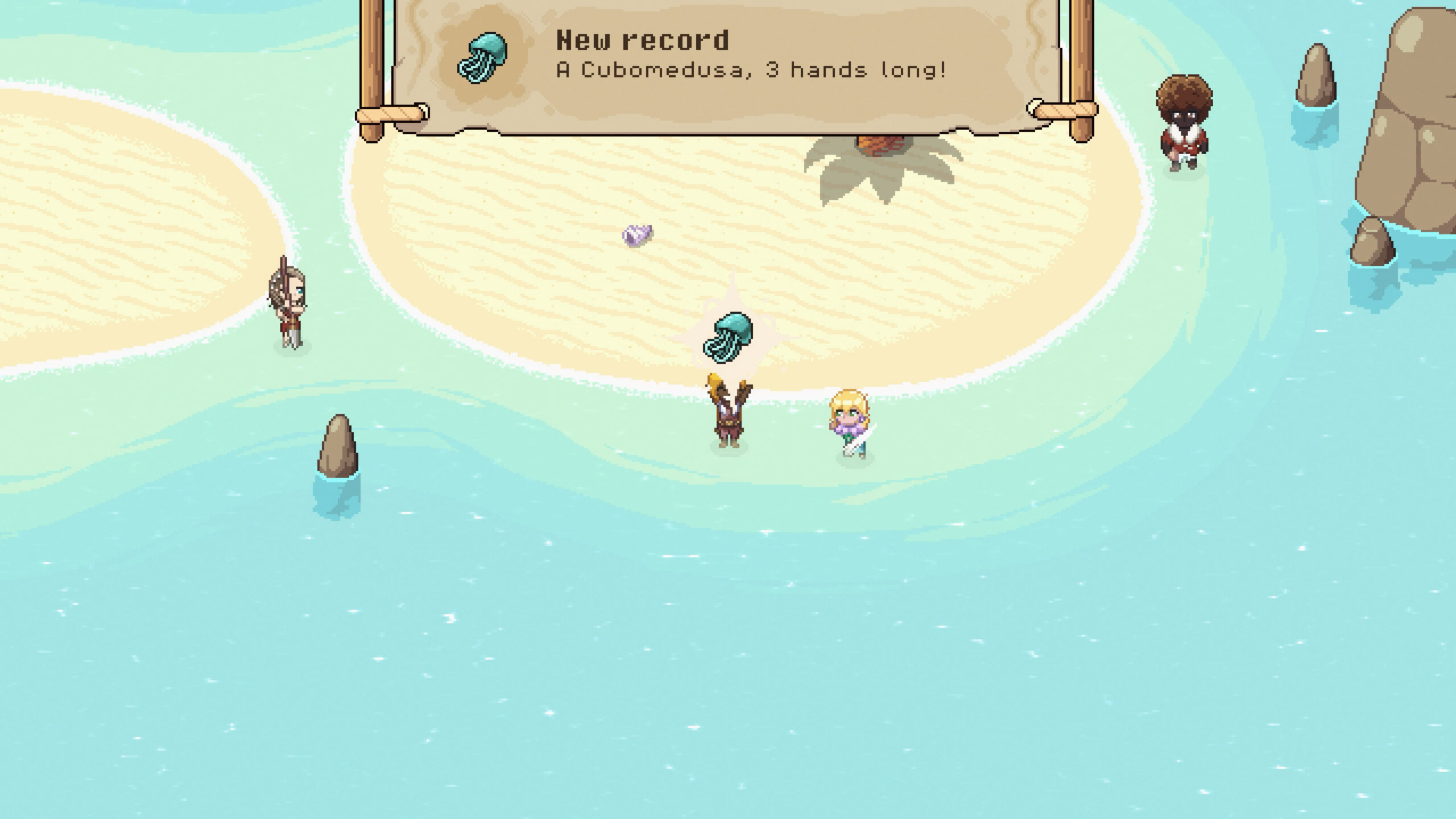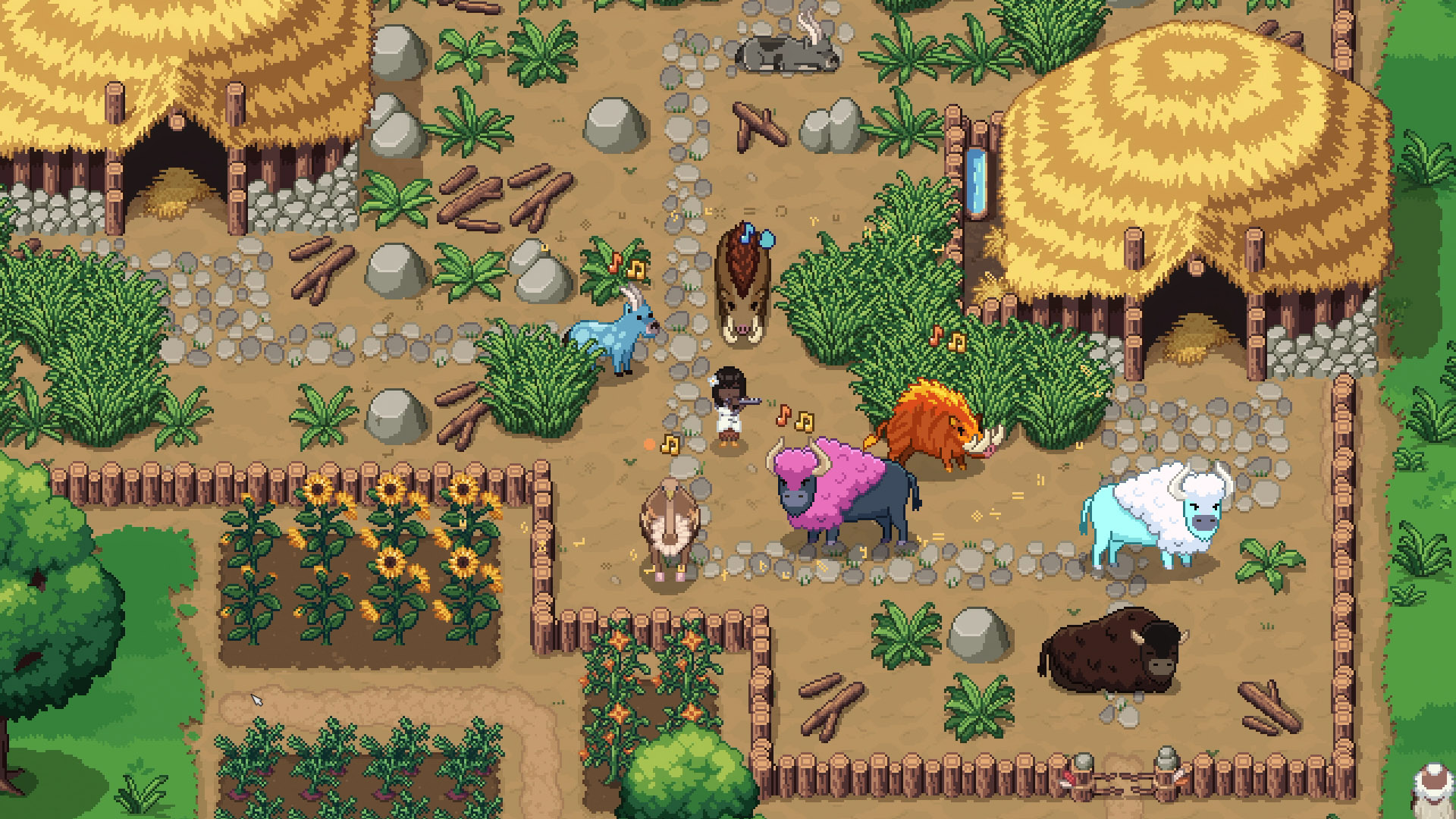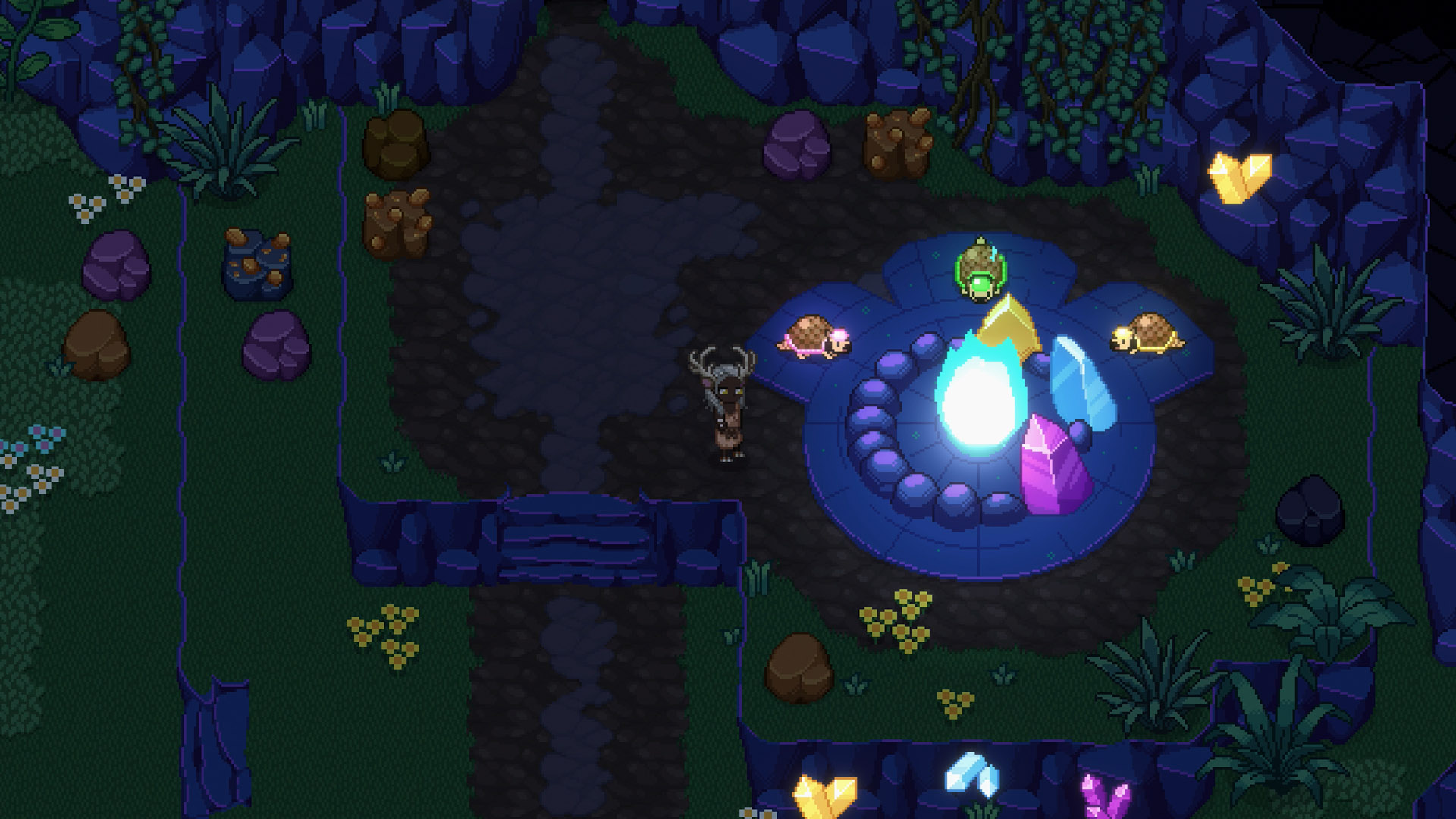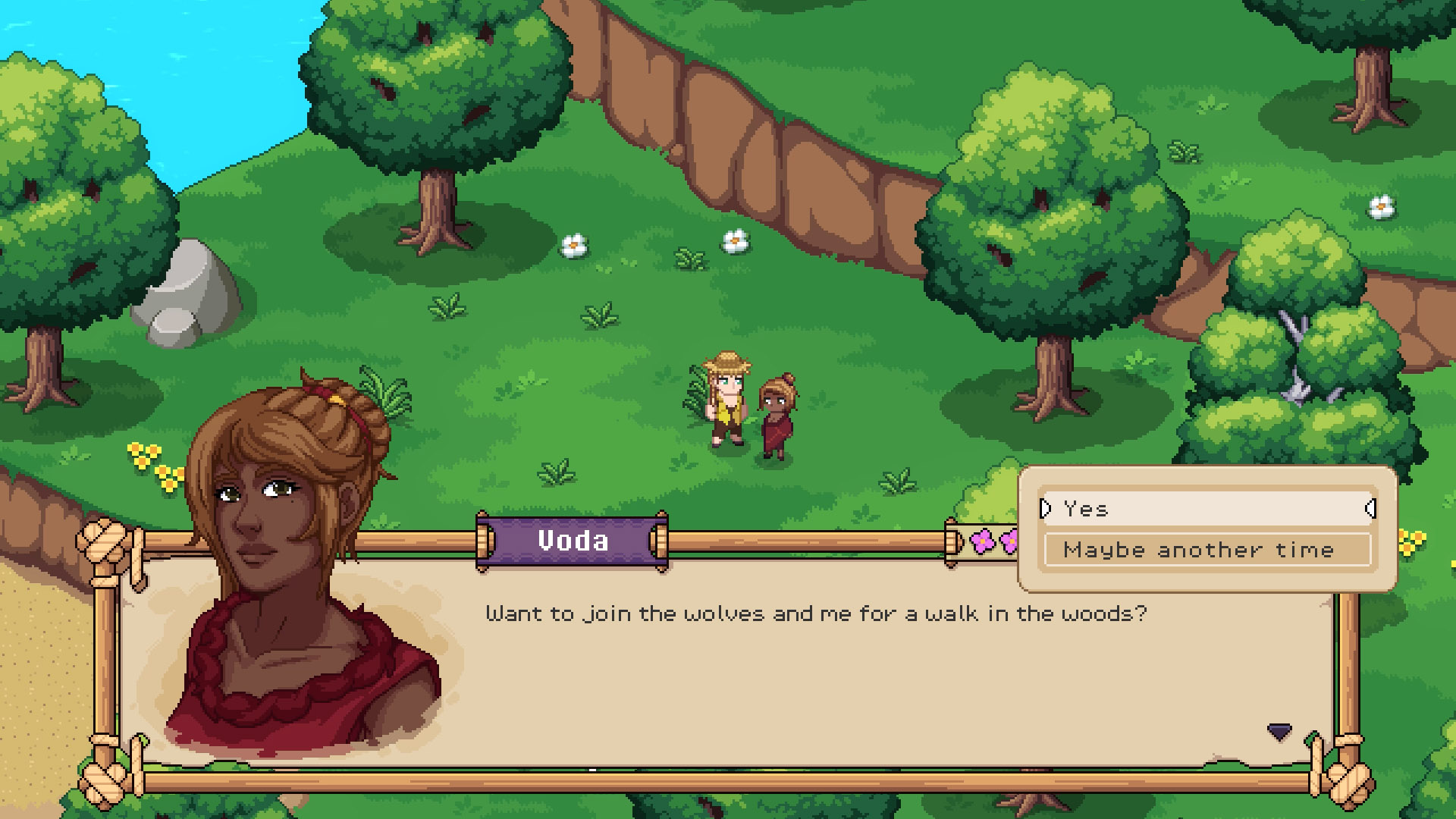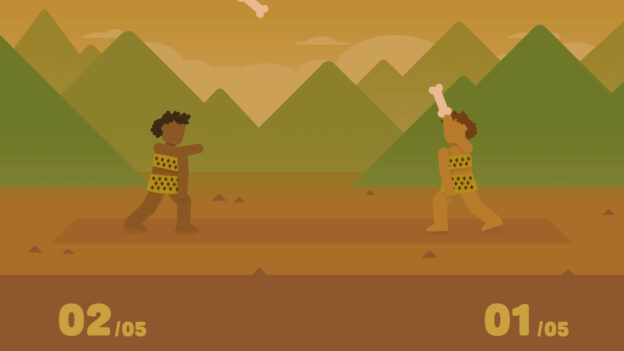Review: Roots of Pacha (Nintendo Switch)
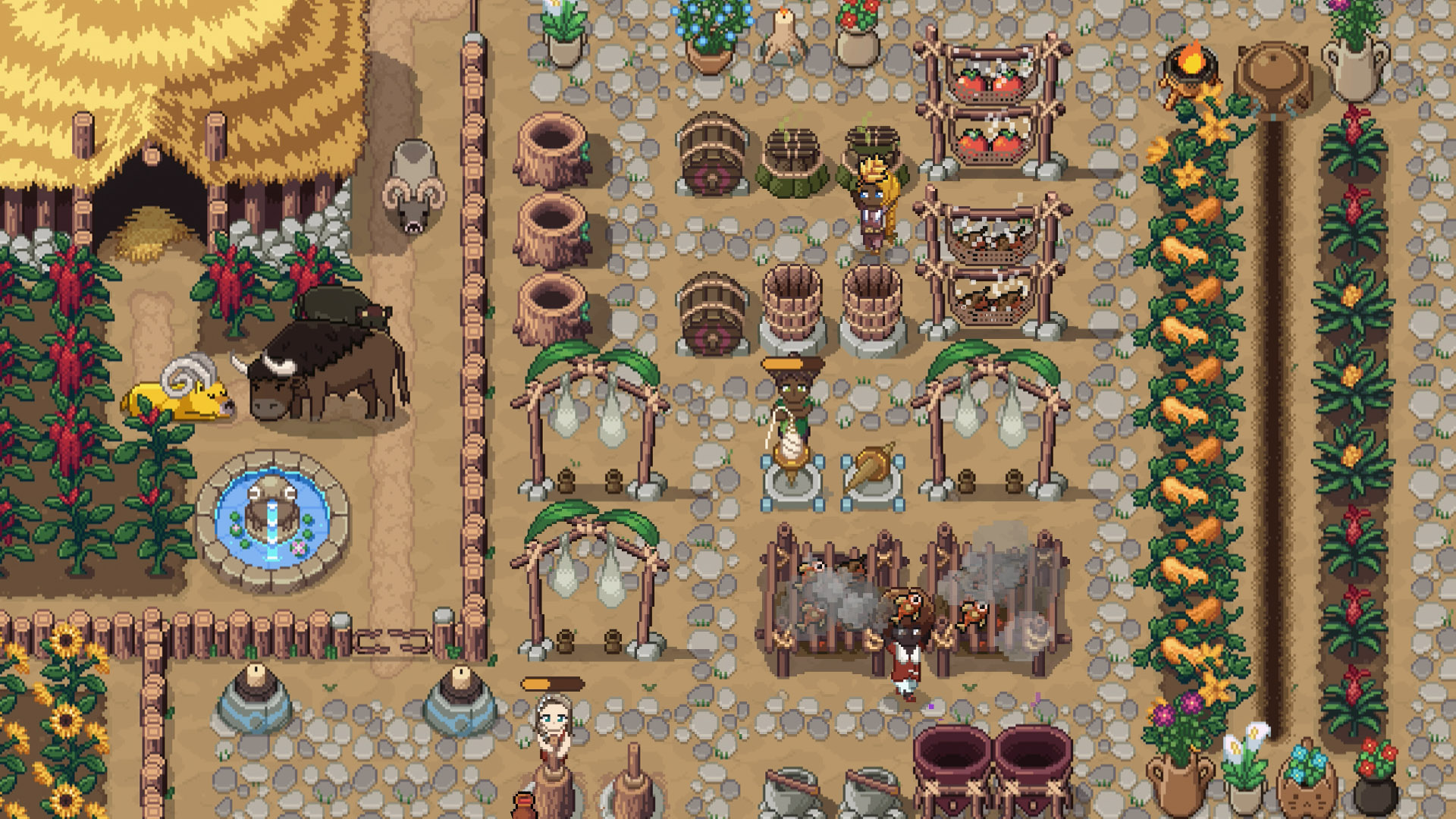
Roots of Pacha is a farming/life simulator that will keep you playing for hours at a time. Set in the stone age, it’s up to you and your clan to care for the land on which you just settled, and to shape human history. With so much to do in this game—farming, fishing, socializing, exploring caves, and more—it’s super easy to get lost in it, which is half its charm. The unique setting allows for gameplay that’s rewarding, relaxing, and fun in both single and multiplayer modes.
The game starts with you and your clan discovering new land that Pacha, whom the clan refers to as “the Creator,” has led you to. You wake up on your first day there, and your adoptive father, Igrork, immediately introduces you to planting wild seeds. This is your first quest that leads to the discovery of farming. Wild seeds are really easy to obtain, as they are spread through the land and the places surrounding it, such as the forest and the savanna. All you have to do is wait for the wild plants to grow to full maturity, collect them, and then plant them on your farm.
After discovering a plant, Igrork will start to sell it to you. As you continue to farm and harvest plants, your knowledge for them will grow, which allows you to discover how long they take to harvest. The farming aspect of this game is very similar to other farming games such as Stardew Valley. All you have to do is plant the seeds, water them, then harvest them.
You can upgrade your tools to interact with multiple plants at time, which allows you to save your stamina. Upgrading requires you to discover new minerals and show them to Acre, the town’s toolmaker. She’ll take a couple of days to inspect the minerals. Once she discovers how to turn them into useful tools, you can buy them from her, while also providing the materials. In Roots of Pacha the currency isn’t anything physical, but instead based on your contribution to the clan. In order to buy anything, you must contribute materials to the contribution box. At the end of each day, you are awarded points for what you contributed. You can contribute your harvest as well as items you’ve gathered around the map, and even things you’ve cooked or crafted.
A lot of the items from which you make the most points are ones you collect from animals. Early on in the game you are taught by Frer to fish. You can either sell the fish as is or dry them first. You can also save the fish for cooking or crafting.
There are many other animals in the game too, a lot of which give you materials such as fur and milk. These, too, can be sold or saved to make food or other materials.
I think one of the best parts of this game is the fact that you not only get to have a pet (or multiple pets depending on how upgraded your house is), but you also get to have a mount, which allows you to travel more quickly. Inviting animals to your village is super easy. You are given a flute which is used to play music for the animals. Once you have it, all you have to do is walk up to an animal and attune it. This starts a rhythm game which, if done correctly, raises the animal’s trust towards you. You can only attune an animal once a day, but once it is fully attuned, you can invite it to either live with you as a pet or live on your farm, depending on which animal it is.
Animals are found all over the map, such as in the forest and the savanna, but they can also be found in the caves. The caves are located throughout the map as well, with an opening in the forest, savanna, and the beach. However, you can only use the forest entrance until you make it further into the cave. The cave is set up as a series of rooms, all filled with rocks that must be broken in order to open the door to the next room. Among the rocks are also a bunch of different minerals. Some of these can be used for tools, and others as gifts or materials to upgrade clothing items that give you extra stamina, charm, etc. As you make it further into the caves, you will need to upgrade your tools to use on tougher rocks. Also in the caves are totems and puzzles. Each totem is associated with a different animal, like a monkey, and once you have offered the totem the correct items, which are shown through cave paintings, you can receive that animal’s ability and use it to solve the puzzles.
While there’s so much to do in Roots of Pacha that’s been done before (farming, fishing, raising animals, cooking, crafting, and mining), what’s unique to this game is the socialization and spirituality of it. The socialization is set up as in other games—like Stardew Valley, again, with the talking, gifting, dating, and marrying—but there is a new element added: dancing. Each week you can dance with a character to raise your relationship. You also rely on the characters to help build the village, as they’re the ones who come up with the ideas, which I haven’t seen before. They’ll add little things such as hammocks or laundry spots among the land, and also invent useful items such as the cheese cloth or brewer.
If you’re playing in multiplayer, you can share your village and acquired resources with friends. Your daily activities can be enjoyed together, and you can even engage in some friendly competitions.
All of the Pachans believe in a higher power they refer to as Pacha. She’s referenced many times throughout the game, as they tell stories of how she created the land and the creatures who live there. In the jungle, there’s a pyramid where Pacha’s prophecies for you are listed. When you complete a prophecy, you are gifted with rewards, such as rings or necklaces with powers that help advance your skills.
Roots of Pacha is a fun game that will immediately catch your attention and leave you not wanting to put it down. With a little bit of everything, this game feels relatable, but also leaves room for imagination and surprise.

